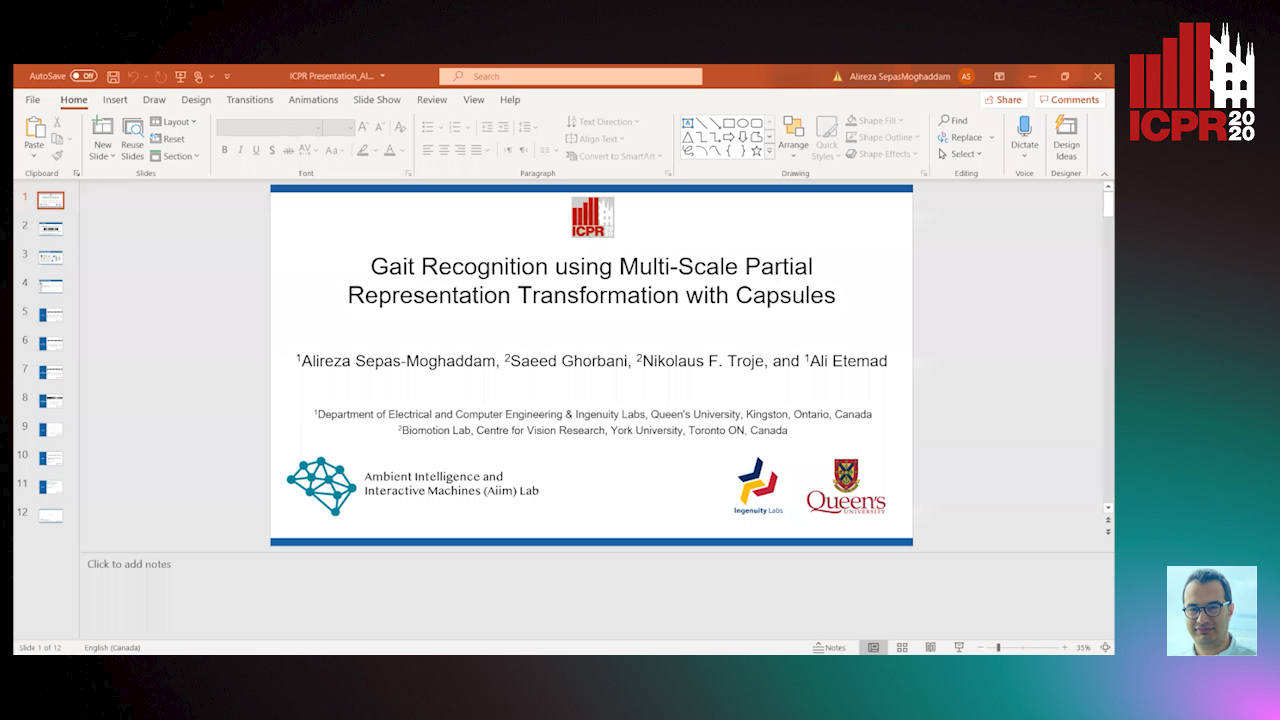Alireza Sepas-Moghaddam
Papers from this author
Gait Recognition Using Multi-Scale Partial Representation Transformation with Capsules
Alireza Sepas-Moghaddam, Saeed Ghorbani, Nikolaus F. Troje, Ali Etemad

Auto-TLDR; Learning to Transfer Multi-scale Partial Gait Representations using Capsule Networks for Gait Recognition
Abstract Slides Poster Similar
Two-Level Attention-Based Fusion Learning for RGB-D Face Recognition
Hardik Uppal, Alireza Sepas-Moghaddam, Michael Greenspan, Ali Etemad

Auto-TLDR; Fused RGB-D Facial Recognition using Attention-Aware Feature Fusion
Abstract Slides Poster Similar